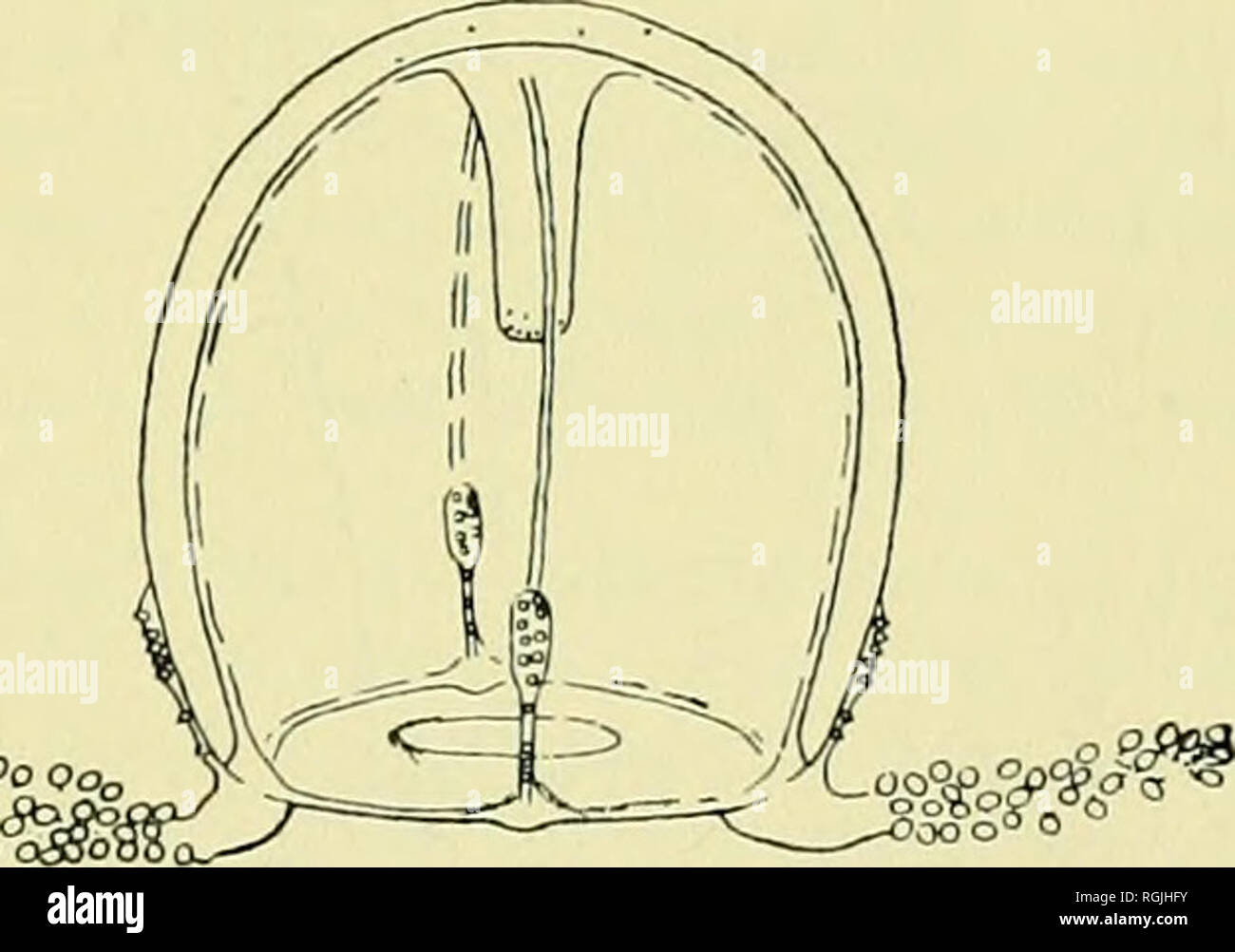. Bulletin of the British Museum (Natural History). ooS^oo?^,. Fig. 47. Zanclea costata Gegenbaur : hydroid and medusa (after Russell & Rees, 1936). Clavatella prolijera Hincks, now more accurately known as Eleutheria dichotoma Quatrefages, achieves family rank on the aberrant nature of its crawling medusa but the hydroid looks like a Corynid in which all the tentacles except the oral whorl have disappeared. (Text-fig. 48).. Please note that these images are extracted from scanned page images that may have been digitally enhanced for readability - coloration and appearance of these illustr

Image details
Contributor:
Book Worm / Alamy Stock PhotoImage ID:
RGJHFYFile size:
7.2 MB (168.2 KB Compressed download)Releases:
Model - no | Property - noDo I need a release?Dimensions:
1887 x 1325 px | 32 x 22.4 cm | 12.6 x 8.8 inches | 150dpiMore information:
This image is a public domain image, which means either that copyright has expired in the image or the copyright holder has waived their copyright. Alamy charges you a fee for access to the high resolution copy of the image.
This image could have imperfections as it’s either historical or reportage.
. Bulletin of the British Museum (Natural History). ooS^oo?^, . Fig. 47. Zanclea costata Gegenbaur : hydroid and medusa (after Russell & Rees, 1936). Clavatella prolijera Hincks, now more accurately known as Eleutheria dichotoma Quatrefages, achieves family rank on the aberrant nature of its crawling medusa but the hydroid looks like a Corynid in which all the tentacles except the oral whorl have disappeared. (Text-fig. 48).. Please note that these images are extracted from scanned page images that may have been digitally enhanced for readability - coloration and appearance of these illustrations may not perfectly resemble the original work.. British Museum (Natural History). London : BM(NH)